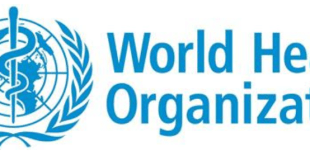· According to the Marsh McLennan Flood Risk Index, Staying above water, India’s 19% Population is at risk at present and if the temperature increases to 2°C, 40% population will be at risk and with 3.5°C warming scenarios, 54% population will be at risk of floods
· Flood risk is pervasive and set to increase. According to Marsh McLennan estimates, 1 out of 3 people globally will be threatened by flooding in a 1.5 °C warming scenario.
Flood risk management is under strain, unable to cope with current levels of risk, let alone change risk trajectories globally. Marsh McLennan’s latest report shares how to put society on a path of greater resilience and shift from a responsive to an anticipatory approach to flood resilience. Underpinned by new data from the Marsh McLennan Flood Risk Index, Staying above water discusses risk drivers, impacts, and the inadequacies of current risk management strategies, offering a rationale for urgent action.
Global economic losses from floods have been on the rise, increasing from $504 billion in the 15-year period between 1992 and 2006 to $729 billion between 2007 and 2021 (inflation adjusted 2021 dollars). Only 17% of global losses were insured between 2007 and 2021, with the biggest protection gaps in developing countries, where insurance is often not available.
Even in emerging markets, only 5% of economic losses from floods over the past 10 years were insured, compared with 34% in developed economies. Recent disasters have exposed the failures of current flood risk management strategies in both high- and low-income countries. Just two months into 2023 and Cyclone Gabrielle caused deadly flooding in New Zealand, and floods in California destroyed roads, levees and power networks. This follows two years of devastating and deadly flooding events across the world.
Risk drivers like climate change are amplifying the threat of flooding, and it is imperative that countries begin preparing for what is next. According to the Marsh McLennan Flood Risk Index:
· 1 out of 3 people globally will be threatened by flooding in a 1.5 °C warming scenario, which could happen as early as 2030.
· 41% of power generation capacity, 37% of international airport seats, and 52% of international port outflows globally will be threatened by flooding in a 2°C warming scenario, which could manifest as early as 2050.
· One-third of the world’s urban areas and nearly half (45%) of the population will be threatened by flooding in a 3.5 °C warming scenario, which could happen by the end of this century.
The danger of flooding will be particularly severe in coastal areas, with many shoreline communities already facing an existential threat. By 2050, 570 coastal cities with a total population of more than 800 million people are expected to be impacted by sea level rise.
Given the scale and complexity of the challenge, transforming flood risk management requires the deployment of a portfolio of solutions in a forward-looking, cross-cutting, and collaborative manner. For this to happen, society must demonstrate vision, move beyond unsustainable paradigms of protection, and balance responses to current crises with a longer-term focus on resilience. Bold steps from the public and private sector are needed to shift society from a responsive to an anticipatory approach to flood resilience.
Staying Above Water: A Systemic Response to Rising Flood Risk is the latest installment of Rethinking Flood, a series on the implications of flooding for societies and businesses and strategies for resilience. The report builds on deep expertise from Marsh McLennan’s Marsh, Guy Carpenter, Oliver Wyman and Mercer businesses and advances three ways forward for society to transform its approach to flood risk management:
1. Learning to live with floods through a cross-societal push for resilience, with communities, businesses, and governments implementing small-scale measures to mitigate risks and minimize damage;
2. Building strategic protection by deploying systemic interventions to protect critical assets and ensure financial resilience; and
3. Preparing for relocation by facilitating resettlements of people and assets from high-risk areas in a timely, equitable, and financially viable manner.
Examples of innovative strategies from different geographies illustrate how the transformation of flood risk management can be realized. The report concludes with a call-to-action by proposing concrete steps to mobilize different stakeholder action.
Appended is the report for your reference. Request you to kindly help publishing the same.
 Newspatrolling.com News cum Content Syndication Portal Online
Newspatrolling.com News cum Content Syndication Portal Online





